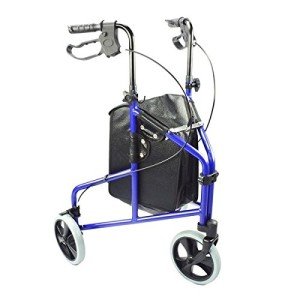
Ergonomic Rollator
FollowOverview
-
Sectors Government
-
Posted Jobs 0
-
Viewed 4
Company Description
5 Killer Quora Answers To Senior Walker
A Comprehensive Guide to Senior Walkers: Enhancing Mobility and Independence
As people age, preserving mobility ends up being essential for protecting independence and quality of life. For lots of seniors, walking aids such as walkers offer a valued option to assist them browse their environment securely and with self-confidence. This short article looks into the diverse world of senior walkers, including their types, benefits, use, and some regularly asked questions.

Comprehending Senior Walkers
Walkers, frequently referred to as walking frames, are mobility aids developed to offer support and balance for people who may have difficulty walking separately. They generally consist of a sturdy frame, grips for holding, and in some cases, wheels for ease of motion. Understanding the different kinds of walkers offered can assist seniors and their caregivers make well-informed decisions.
Kinds Of Senior Walkers
| Walker Type | Description | Best For |
|---|---|---|
| Standard Walker | A four-legged frame that should be lifted to move forward. | Seniors needing maximum stability. |
| Two-Wheeled Walker | A walker with two wheels on the front for much easier mobility. | Those with minor balance problems. |
| Four-Wheeled Walker | A walker with four wheels, frequently consists of a seat and brakes. | Active seniors needing mobility and pause. |
| Rollator Walker | A kind of four-wheeled walker that is lightweight and foldable. | Seniors who are more active and require minor assistance. |
| Platform Walker | A specialized walker with a platform for assistance, often utilized in physical treatment. | People needing particular support for injuries. |
Benefits of Using Senior Walkers
Senior Walker walkers supply numerous benefits that considerably boost the mobility and self-reliance of elderly people. Here are a few of the most noteworthy benefits:
- Increased Stability: Provides a strong base of assistance, lowering the danger of falls.
- Improved Confidence: Encourages movement and can minimize anxiety about walking.
- Improved Posture: Helps maintain an upright posture while walking.
- Social Engagement: Facilitates involvement in social activities by allowing mobility.
- Healing Use: Can be utilized throughout rehab to improve strength and balance.
Picking the Right Walker
When picking a walker, numerous factors ought to be considered to ensure the best fit. Below are crucial points seniors or caregivers must evaluate:
- Weight Capacity: Ensure the walker can support the user’s weight.
- Height Adjustability: A proper height adjustment is necessary for comfort and effectiveness.
- Mobility Needs: Consider the user’s specific needs, such as level of stability required.
- Way of life Factors: Think about where the walker will be used and how regularly.
Proper Use of Walkers
To maximize the benefits and decrease threats related to walkers, correct usage techniques are vital. Here are actions seniors should follow:
- Stand in the Walker: Position the walker in front of them, ensuring it is stable.
- Grip the Handles: Hold the deals with strongly, ensuring a comfortable grip.
- Walk Inside the Frame: Move forward by taking small actions, making sure the front legs of the walker stay on the ground.
- Turn with Care: To change instructions, pivot on the feet while moving the walker.
- Use Cautiously: Avoid rushing and remember to take breaks when tired.
Regularly Asked Questions (FAQs)
What is the typical rate of a senior walker?
The price of senior walkers can vary based on functions and materials utilized. Standard walkers might cost as low as ₤ 30, while advanced models with wheels and seats might vary from ₤ 50 to ₤ 150.
How do I identify if my loved one needs a walker?
Signs that a senior might need a walker can consist of regular stumbling or losing balance, a current surgery or injury affecting mobility, and preventing walking or participating in social activities.
Can a walker help with rehab exercises?
Yes, walkers can be an important part of physical therapy, assisting seniors restore strength and agility through safe motion.
Where can I acquire a senior walker?
Walkers can be purchased at medical supply shops, pharmacies, or online retailers. Some insurance coverage plans might even cover part of the cost.
How do I keep a senior walker?
Regular maintenance includes looking for loose parts, guaranteeing brakes operate properly, and cleaning up the frame to avoid rust or wear.
Senior walkers are an important resource for maintaining mobility and independence as one ages. With numerous kinds of walkers offered, it is important for seniors and caregivers to consider personal needs, use, and convenience when selecting an appropriate walking aid. By encouraging safe mobility, walkers not just improve physical capabilities but likewise positively effect social connections and psychological wellness.
Through correct use and care, seniors can enjoy an active, appealing way of life, boosted by the assistance of their walker. Understanding the value of mobility aids like walkers is fundamental in promoting enhanced life quality for seniors dealing with mobility obstacles.

